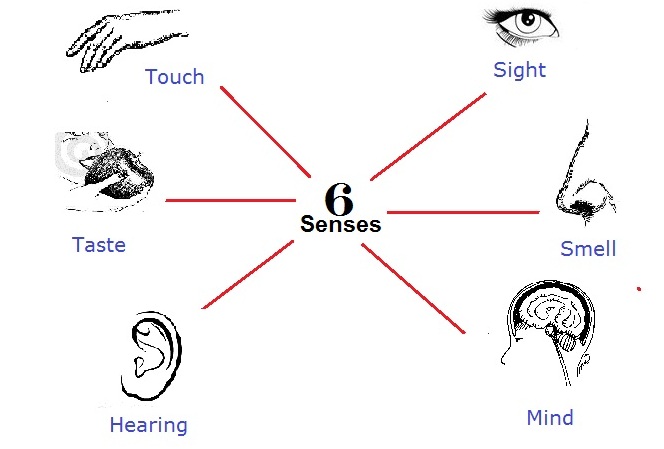
NO-SELF
The last and perhaps most misunderstood of the three characteristics is “no-selfâ€.
The original Pali term, anatta, means literally “not-selfâ€.
We have this notion that there really is a permanent or autonomous “Iâ€.
We might say, “Hello, I am…â€
and be quite convinced that we are talking about
a permanent, separate thing that can be found.
However,
if we are just a bit more sophisticated, we might ask,
“What is this ‘I’ which I am sure is ‘me’?â€
We have grown so habituated to the fact of its definition
changing all the time that we hardly notice it,
but the point of insight practice is to notice that,
and to see just what it is that we are calling “I†in each moment.
We may begin with the obvious assumption:
I am my body.
Isn’t it strange how we are so used to this constant redefining of ourselves
that we never stop to question it?
So question it!
This odd sense of an unfindable watcher
to which all of this is happening
yet
which is seemingly separate from what is happening,
which sometimes seems in control of “me†and yet
which sometimes seems at the mercy of reality—
what is it really?
What is going on here?!
To begin to unravel this mystery
through the development of better perceptual skills is
to begin to awaken.
Simply put:
Reality with a sense of a separate watcher is delusion,
and reality just as it is, is
Awakening.
~~~
With systematic debunking through insight practices of
the illusion of some sense of a permanent, separate, independently existing self,
we learn to perceive things as they are naturally.
By understanding our bare experience more clearly
the process of identification can stop, and by identification,
I mean misperceiving various aspects of experience such as
body and thoughts as being equivalent to a “selfâ€.

Any thoughts with “Iâ€, “meâ€, “myâ€, and “mine†in them
should be understood to be just thoughts that come and go.
They are simply qualities of manifestation, like flavors of ice cream.
It is not that chocolate is good and vanilla is bad;
all flavors of experience are just flavors,
and sometimes the flavor of the moment is “Iâ€, “meâ€, “mineâ€, and the like,
and even those flavors don’t constitute a real “Iâ€, “meâ€, or “mineâ€.
So,
if those qualities arise,
just notice them come and go like everything else.
At this point you might wonder, so who or what is it that awakens?
The question itself is based on a false assumption;
namely, that
awakening needs to belong to a permanent or separate something.
Instead,
we could say that it is all this transience that awakens.
We don’t have to sort this out all at once.
We can begin with simple steps and the rest will fall into place
if we are diligent and skillful.
Now that I have made the possible seem mystical and abstruse,
hopefully I will also make it seem very doable.

The big, practical trick to
understanding no-self when doing insight practices is
to tune in to the fact that sensations arise on their own
in a natural, causal fashion, even the intentions to do things.
This is a formal practice instruction.
This practice may sound difficult until you think about it
and then perhaps it might seem so obvious as to appear trite.
But it is neither difficult nor trite,
and understanding it again and again, moment to moment,
can bang the truth into us, and when we fully get it …
we will be free.
In fact,
just letting whatever happens happen is so easy
that people can quickly get bored or distracted,
thinking there must be something more than this,
but this is a key part of realizing what is going on.
Start and perhaps remain with obvious sensations,
such as physical sensations.
They just show up and check out, don’t they?
Tune in to this.
Allow this quality of things arising and passing on their own to show itself.
Notice that
whatever is observed is not “me†or “mineâ€.
Notice this again and again and again
at a rate of one to ten times per second as before.
There is an apparent paradox here relating to effort and surrender.
In many ways this paradox is at the heart of the spiritual life.
There is much advice available on this point,
but in terms of insight meditation practice I would say that
if, when meditating, you can
perceive the arising and passing of phenomena clearly and consistently,
that is enough effort,
so allow this to show itself naturally and surrender to it.
Part of your job is to figure out how gentle you can be
while still perceiving things extremely clearly.
This takes fine-tuning and usually in the beginning
requires some overshooting,
but remember that this efficiency and delicacy, this subtlety,
are part of your goal.

A useful teaching is conceptualizing reality as six sense doors:
touch, taste, seeing, hearing, smelling, and thought.
It may seem odd to consider thought as a sense door,
but this is much more reasonable than the assumption that
thoughts are a “me†or “mine†or in complete control.
Just treat thoughts as more sensations coming in which must be understood to be
impermanent, unsatisfactory, and not-self.
In this strangely useful framework,
there are not even ears, eyes, skin, nose, tongue, or mind.
There are just sensations with various qualities,
some of which may imply these different sense doors for an instant.
but yet, as Rupert Spira states:
To the mind… All sensate phenomena are just
Tingling Amorphous Vibrations

This article was inspired by
Buddha’s step by step instructions to obtain Enlightenment
as refined by The Arahant Daneil M. Ingram.



